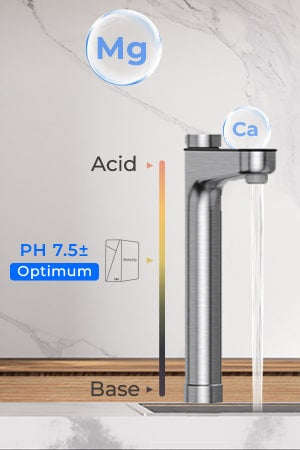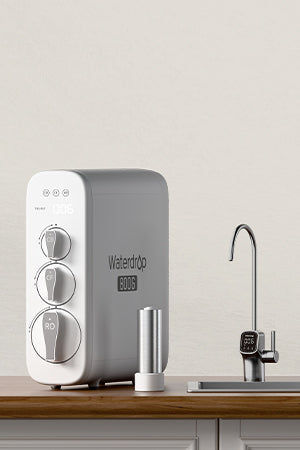Purifying your water at home is the best way to ensure the quality and
To ensure the safety of the water you drink and use. Of course, it is well known that municipal
Water treatment plants provide pure water, but toxins can be released due to the aging of the infrastructure
or for environmental reasons still exist. Purifying the water at home therefore offers you a
additional protection against potential health risks from pollutants.
purification method for household water
Pure water is important for domestic use, such as
Cleaning and cooking as it blocks these pollutants. It also improves the overall taste and smell
of the water used and makes water absorption more satisfactory.
It protects against infectious complications caused by bacteria, viruses and parasites
that survive traditional treatments and can exist freely in your water.
There are a variety of methods, all aimed at combating harmful toxins and
to improve your health and well-being. Now that you know why cleaning the
Family is essential, let's discuss the options available to you.
Cooking
Boiling water is a simple and effective way to boil the water in your
house if you are unsure how safe the water source is. This inexpensive and
reliable method is the first line of defense against intangible threats such as bacteria and parasites,
that may be present in the water and cause health problems.
Depending on the altitude, boil clean water and leave it for the recommended
Time – usually one to three minutes – to begin the cleaning process. At higher altitudes,
the boiling point of water is lower, which means that life there requires longer boiling times. Before
Cover drink with boiling water and let cool.
Allow the compounds to precipitate sufficiently in the water before filtration to
ensure that the water is safer and clearer. The quality of boiling water is usually
improved by filtering the cloudy water with a cloth, towel or water filter to
to remove larger particles and contaminants.
Boiling does not eliminate all impurities, including metals, salts, fuel, hazardous
compounds, and radioactive materials. So, if these problems are present in your area, you might want to consider
more technical approaches for a better solution.
UV cleaner
UV water purifiers use UV radiation to destroy the DNA of bacteria, viruses and
other pathogens and prevent them from replicating and eventually
to kill.
To clean the water with a UV system, you must first make sure
that the water is free of deposits and particles that protect the bacteria from UV rays. Many
UV purifiers contain pre-filters to reduce this risk. To maximize UV radiation, place the
Water in a transparent container; The success of these systems depends on their direct contact with the
treated water.
When the setting is complete, turn on the UV cleaner. UV lamps
emit certain wavelengths that destroy the genetic material of microorganisms. However, they can
nor do they remove any physical contaminants, chemicals or heavy metals. So for a healthy house
Water purification system, you can consider other alternatives. The combination of UV treatment with
other filtration methods such as activated carbon filters is also an excellent way to obtain pure water
home.
There are two common types of UV technologies used in domestic
water filter systems. These are low-pressure mercury vapor lamps and complex light-emitting diodes
(Light Emitting Diodes). The usual choice is a low-pressure mercury vapor lamp, which emits ultraviolet
Produces low wavelength radiation and is particularly effective in neutralizing bacteria.
However, these lamps contain little mercury, which means you should handle and dispose of them with care
must.
On the other hand, UV cleaners with LED technology are gaining popularity due to their
higher energy efficiency, longer service life and mercury-free composition are becoming increasingly popular.
The LED can emit UV light in different wavelengths to target specific pathogens.
remove.
distillation
Distillation is another safe household water purification technology that
Evaporation is used to remove contaminants. This process involves large,
non-volatile organic molecules and inorganic chemicals by heating the water to the degree of
Steam is removed. The result is pure water that is free from contaminants such as lead and nitrate when the
Steam is cooled and condensed.
In addition to removing inorganic pollutants, distillation can also
Microorganisms such as bacteria and some viruses can be eliminated through cooking. But this approach also has subtleties.
Although it is effective in removing some organic pollutants due to its solubility and boiling point,
Compounds, there is a risk that substances with a lower boiling point than water, such as
Toluene and benzene, evaporate with water and re-contaminate the filtered product if they are
Condensation is not treated properly.
filtration
The main filtering process is a part of our daily life and consists
usually from filters installed in tanks or faucets. These filters use activated carbon,
to capture pollutants and improve water quality. For a healthier experience and better
However, there are many filter systems for household water, which are discussed below.
Water filter system in the sink: It is cleverly hidden under the kitchen sink
and typically uses multiple filter stages, including carbon and sediment filters, to remove particles, chlorine
and other pollutants. Thanks to its location, you can easily install the filter into your existing
Integrate piping system.
Mesa Water Filter System: This household water treatment system is a
standalone device that is placed on the kitchen countertop and does not require complicated installation
It helps to purify water with activated carbon, ceramic and reverse osmosis. This is one of the most convenient
methods because it is comfortable, mobile and adjustable.
Waterdrop K19-H instant hot water dispenser with
countertop reverse osmosis system
€336.13
Whole house water filter system: This system ensures that every
faucet in your home provides pure water, so it is often used as a replacement for water purifiers in sinks
and other devices. It usually includes a series of filters and in some cases
Water softeners that provide additional water treatment at the inlet point. The water purification system
purifies your drinking water and provides benefits for bathing, cooking and other household activities.
Each water filter has its own advantages. The filter under the sink is
concealed and ideal for a single water source, the countertop filter is portable and simple and the whole
House system offers a complete solution for the entire house.
chlorination
Chlorine-based compounds such as chlorine, sodium hypochlorite or calcium hypochlorite
are commonly used in typical chlorination processes. These commercially available chemicals provide
affordable way to purify the water in your home.
The most common method is household bleach, which is usually
Sodium hypochlorite. This chemical is added to the water in precise quantities for disinfection, without
taste or safety. While chlorine effectively kills bacteria, viruses and parasites,
kills, it cannot permanently remove all chemical contaminants or impurities. Therefore, it is
important to evaluate water quality and potential contaminants when deciding on chlorination.
Depending on your preferences, you can choose from a variety of chlorination treatments
One of the most popular options are chlorine tablets or granules. After adding the tablets to
Water according to the instructions, the tablets gradually decompose and the chlorine is released into the water
Another possibility is to use a liquid chlorine solution (e.g. bleach) to
to manage the dose.
To achieve optimal results and avoid unintentional additions,
Always use chlorinated products that are specifically designed for water treatment. In addition,
It is important to know the right amount of chlorine to add. Too much or too little chlorine can lead to
unpleasant flavors or potential health risks.
reverse osmosis
Water molecules penetrate the semipermeable membrane through reverse osmosis and
leave behind pollutants. Many pollutants such as bacteria, viruses, minerals and other particles that
taste and safety of the water can be successfully removed with this method
become.
You can install a reverse osmosis system in your home as a countertop, under the sink
or install it as a water filter throughout the house. The advantage is that it removes pollutants and
while improving the taste and smell of the water. This is a cost-effective and environmentally friendly
Solution that reduces the need for bottled water and promotes sustainable development.
Which household water treatment system is best for you?
Reverse osmosis (RO) is a reliable method to remove various pollutants,
including viruses and bacteria. For cooking and drinking, it provides thorough cleaning,
can be installed as a water purifier for the sink and is connected to all taps in the house.
Filters like Waterdrop The 3-stage home water filter system improves the taste very well and removes iron
and manganese from all household water.
Distillation also works wonderfully to remove some pollutants and minerals
UV radiation cannot completely remove all pollutants, but it can effectively
disinfect. Cooking is a basic method for eliminating parasites and bacteria, but it
leaves behind other contaminants.
The ideal water treatment system depends on your individual preferences
and requirements. To select the system that best suits your needs, consider
Your preferences regarding taste, ease of use and type of contaminants.
CONCLUSIONS
When it comes to thorough cleaning, a reverse osmosis system is a
great idea. Alternatively, systems like Waterdrop 320 Gallon long-acting faucet filters, which
Filtration, used for countertops and single-out water sources to provide better
taste for your daily use.
Cooking provides a direct method for eradicating microorganisms.
Minerals can be effectively removed by distillation. In the meantime, UV light is sufficient,
but cannot remove all contaminants. Therefore, as we have discussed, the choice between
Distillation, boiling, UV, filtration, reverse osmosis or any other option depending on your needs.









































































